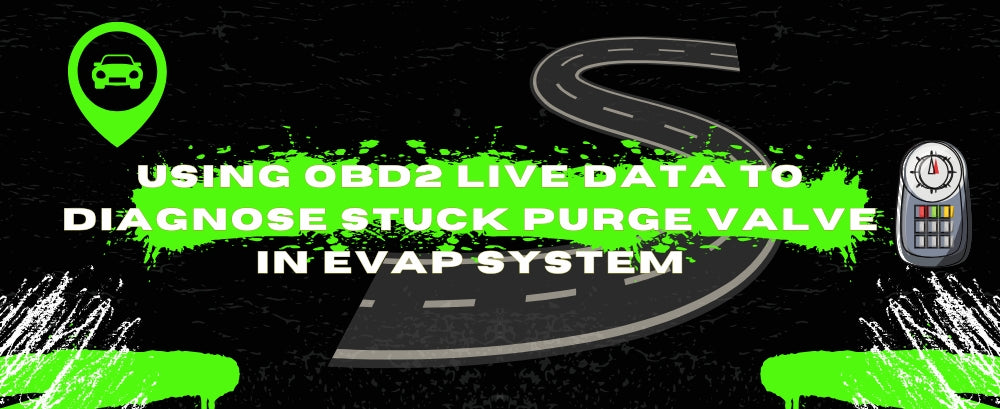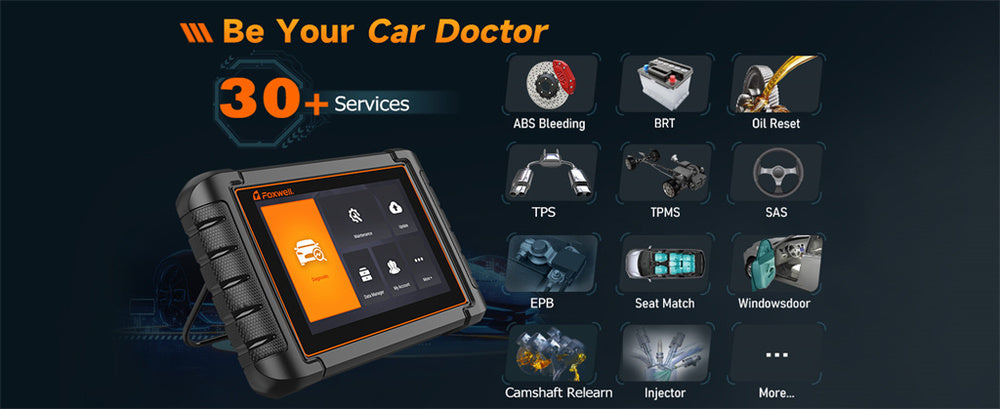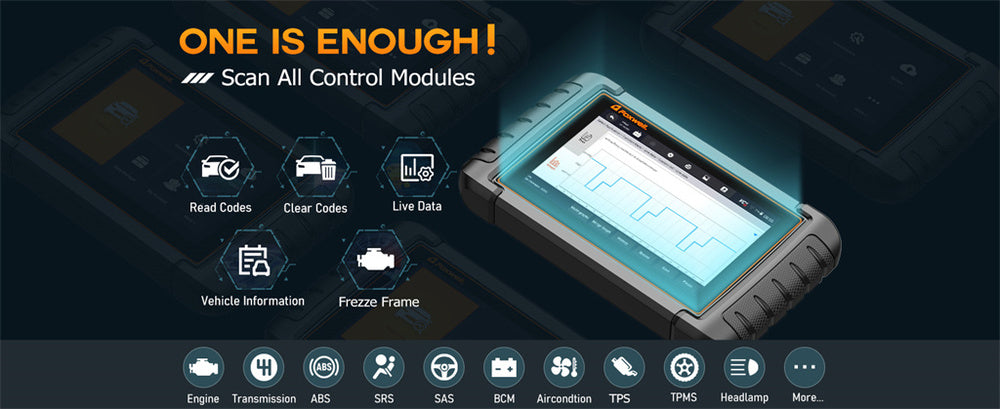If you’ve ever struggled to start your car after refueling, you know the frustration of dealing with a vehicle that just won’t cooperate.
Often, the culprit can be a stuck purge valve in the Evaporative Emission Control (EVAP) system, which can cause all sorts of starting issues.
You may find yourself asking: Why is this happening? And how can I fix it? Fortunately, with an OBD2 scanner and some live data analysis, you can diagnose the problem and get back on the road without the hassle.
Understanding the EVAP System and Its Components
Think of your EVAP system as a personal spa day: cleaning away fuel vapours instead of applying cucumber face masks.
One key component is the purge solenoid (also called purge valve), which controls when fuel vapours can escape during startup. If left open too often, the purge solenoid can cause trouble starting your vehicle.
Left open for too long, the purge valve can cause issues starting up your engine, potentially leading to difficulty starting your car altogether.
Next is the charcoal canister, which acts as an eco-friendly bouncer at vapour clubs, keeping unwanted vapours from escaping into the atmosphere. Finally, we have the fuel tank pressure sensor.
Think of this sensor as your tank's mood ring: it tells you when things are too tense or just right! Understanding these components helps explain why a stuck purge valve can throw off an entire system; inviting cats or dogs alike could prove disastrous!

How Can You Recognize a Stuck Purge Valve
So, how can you tell if your purge valve is having difficulty? There are some telltale signs to look out for.
First, if your car refuses to start after you refuel, it may signal its disapproval of action—almost like it's saying, "Not today!"
Sometimes, all it needs is some encouragement in the form of either an encouraging chat with you or some extra high-octane fuel!
Watch out for rough idling—it might be gasping for air! Additionally, don't overlook your car's signature warning light. When it flashes unexpectedly with no specific code attached, that is its way of telling you something may be amiss!
Why Use OBD2 Live Data for Diagnostics?
You might be thinking, “Why bother with OBD2 live data?” Well, imagine your car is a teenager with secrets. Live data is like having a heart-to-heart conversation where you finally get to the bottom of those mysterious issues.
With live data, you can monitor important parameters such as fuel trim levels. These levels indicate whether your engine is running rich (too much fuel) or lean (not enough fuel). If they’re off, it’s time to bring in the purge valve for questioning!
Additionally, oxygen sensor readings can reveal how well your engine is breathing; if these readings indicate otherwise, intervention might be required.
And don't forget about vacuum levels. If your purge valve gets stuck and causes unusual vacuum levels, think of it like your car trying to do yoga but becoming stuck in a downward dog.
Are You Wondering How to Diagnose a Stuck Purge Valve
Channel your inner Sherlock Holmes with this step-by-step approach to diagnosing that stubborn purge valve! Everything's laid out clearly, so you won't get lost.
- Attach Your OBD2 Scanner: Start by plugging your OBD2 scanner into the OBD2 port under your dashboard—this is like giving your car some intensive therapy, and it will reveal some hidden truths!
- Access Live Data: Once connected, navigate directly to the live data section of your scanner for maximum investigative ability. Here lies your opportunity for real discovery work!
- Monitor Fuel Trim Levels: After starting your engine, carefully observe its fuel trim levels. If they appear to fluctuate more drastically than a Monday morning mood swing, that could indicate that the purge valve needs attention.
- Examine Oxygen Sensor Readings: Once again, evaluate the oxygen sensor readings. These should ideally remain steady; any fluctuation suggests something might be amiss.
- Assess Vacuum Levels: Use your scanner to assess vacuum levels. If they appear abnormal, this could indicate that an improperly functioning purge valve could be the source of the issue.
By following these steps methodically, you will collect key data that will allow you to pinpoint your issue accurately.
Interpreting OBD2 Live Data: Key Parameters to Monitor
Exploring OBD2 live data is a great way to diagnose a stuck purge valve effectively. Think of these metrics as vital signs for your car: each tells something essential about its health.
First up are fuel trim levels. These represent short-term and long-term adjustments of how much fuel the engine adds over time and should ideally remain steady at zero; any significant fluctuation indicates your engine may have difficulty maintaining an ideal air-fuel mixture, perhaps due to an improper purge valve operation.
Next, let's discuss oxygen sensors. These play an essential role in monitoring exhaust gases. Under normal operating conditions, the voltage from these sensors should fluctuate between 0.1V and 0.9V; any readings outside this range indicate your engine might be running rich or lean, likely indicative of issues in its EVAP system.
Manifold Absolute Pressure (MAP) readings are also vitally important. A manifold absolute pressure sensor measures the pressure in an engine's intake manifold to help determine load and performance; should your purge valve become stuck open, these readings may no longer reflect its expected performance and could signal problems within your engine.
Do not neglect vacuum levels, either. A failed purge valve may cause abnormal vacuum readings that interfere with various engine functions, such as fuel delivery. If these levels appear inconsistent or seem out-of-whack, further investigation should be performed.
By monitoring these parameters, you can gain invaluable insights into your vehicle's condition. Not only can this data aid in diagnosing a stuck purge valve, but it can also enable more informed decisions regarding maintenance and repairs.
Assume this real-life situation: A driver is having trouble starting their car after filling up with gas, becoming frustrated as they turn the key over and try again and again to no avail.
By connecting their OBD2 scanner, they discover abnormal fuel trim levels and irregular oxygen sensor readings that lead them down a rabbit hole of suspicion; once replacing their stuck purge valve, they confirm it has opened without issue - thus solving their problems with just some detective work!

Potential Solutions for a Stuck Purge Valve
Once it is confirmed that your purge valve is stuck, there are various solutions you should explore. Cleaning may help, but if that doesn't do the trick, maybe a new valve should be replaced. Also, check all wiring connections, as loose wires can create havoc in the EVAP world like an awful reality TV show!
Inspecting its charcoal canister is another critical step in maintaining our vapour bouncer's health and efficiency. If it appears damaged, replacing it might be in order. After all, no one wants their machine to get exhausted on the job!
Preventive Maintenance Tips for an EVAP System
To keep your EVAP system in peak condition and ward off potential headaches, here are a few essential maintenance guidelines:
- Conduct Frequent Inspections: Just like checking your fridge regularly for expired food, check your vehicle thoroughly. Look out for wear and tear in its EVAP components, like the purge valve and charcoal canister, to detect potential issues with wear-and-tear wear and tear.
- Always Select High-Quality Fuel: Opting for high-quality fuel is key to avoiding deposits accumulating in your EVAP system, giving your engine some much-needed TLC! Clean fuel leads to happier engines!
- Address Warning Signs Promptly: If the check engine light comes on, don't ignore it! Treat it like an urgent plea from your vehicle for help and take steps to address the problem and prevent larger ones as soon as possible.
By following these tips, you can keep your EVAP system healthy and avoid costly trips to a mechanic.
Conclusion
Diagnosing a stuck purge valve doesn't need to be stressful. By understanding your EVAP system and taking advantage of OBD2 live data, you can quickly pinpoint any problems.
Regular maintenance checks and timely attention to warning signs will keep your car running smoothly; with these insights at your fingertips, you'll be better equipped to tackle any car troubles that arise while enjoying worry-free driving.
FAQs
How to tell if an EVAP purge valve is stuck open?
If the purge valve is stuck open, you may experience difficulty starting the car, especially after refueling. Other signs include rough idling and fluctuations in OBD2 fuel trim readings.
How to test an EVAP purge valve?
Connect an OBD2 scanner and monitor fuel trim, oxygen sensor, and vacuum levels. Abnormal readings can indicate a stuck purge valve. Alternatively, you can use a handheld vacuum pump to check if the valve holds pressure when closed.
What is EVAP on an OBD2 scanner?
EVAP (Evaporative Emission Control) is a system in your vehicle that prevents fuel vapors from escaping into the atmosphere. On an OBD2 scanner, EVAP data helps diagnose issues related to fuel vapor control and emissions.




Leave a comment
This site is protected by hCaptcha and the hCaptcha Privacy Policy and Terms of Service apply.